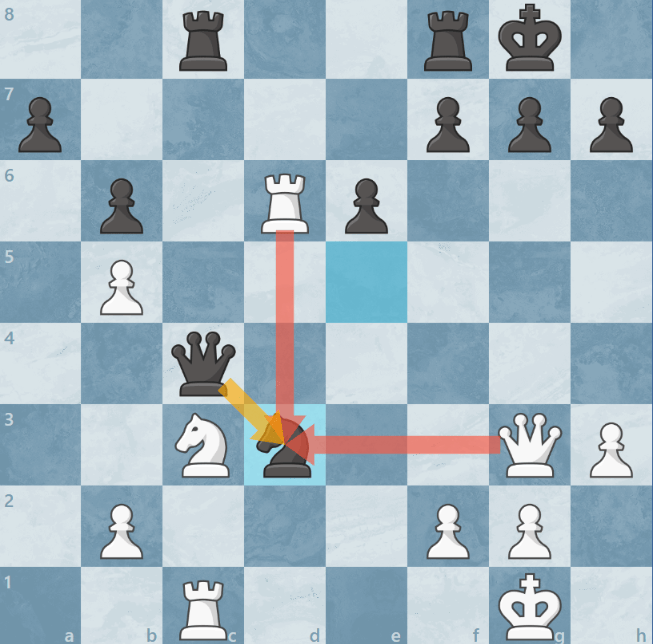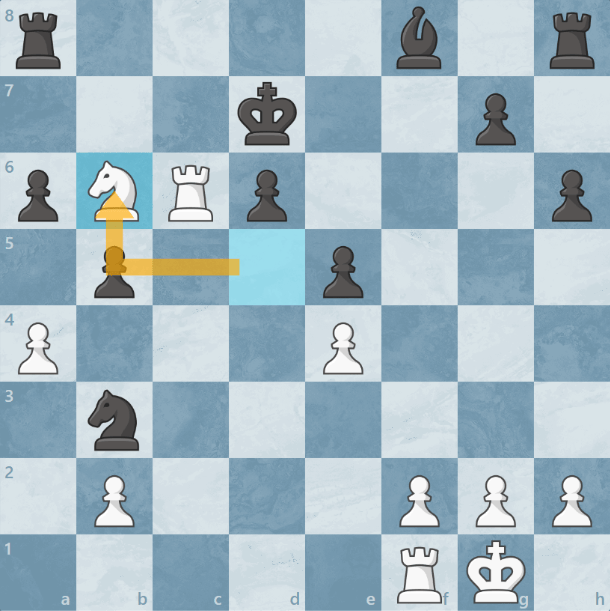
Your biggest weapon if you are under 1200 rating
Hello Fellow Chess Players!
Today I will mostly be talking to the players under 1200 chess.com rating, but if you are higher rated, it can still be interesting for you, so you are welcome to stay as well.
Have you been wondering what is wrong with your chess when you bought so many books or courses on Chessable/you have watched all the chess improvement videos on YouTube or other sites? Have you been frustrated that you get to a beautiful, winning position, then you ruin it by a simple blunder and all is lost due to this stupid mistake?
Now I could give you one simple piece of advice, and basically I could finish the article here: “Don’t blunder”. I’m just kidding, I still have a lot to say about this topic. 🙂
I honestly believe that under 1000 chess.com rapid rating, but even under 1200, the biggest issue is blundering pieces. In these fights it often doesn’t matter who can play better, but who sees the board better. I am also convinced that you don’t need such deep strategies or deeper plans on this level. Those are important too, but imagine; you find the best place for your pieces in an attack, but then you don’t see that your Queen was threatened and your opponent takes it. Or let’s say you are aware of your opponent’s poor pawn structure, so you make a plan to capture the weak pawn they have, but then you end up not seeing a Bishop from the other side of the board and you lose a piece.
In my opinion you should focus on piece safety (both for you and your opponent) more than anything! If you pay attention to this, you will improve a lot, which will bring a lot of rating points as well! If you confidently see the board, you are aware of what is safe and not, even if you don’t see what can happen in the next couple of moves, you are already much better than you were before. Also, here is a secret: once you can spot hanging pieces quite fast, you will more likely be able to defeat much stronger players, because they also blunder!
Here is an example:

What can you do actively to avoid making blunders and spot your opponent’s blunders?
1. Focus better!
No multitasking, no chatting online or offline while you play, no social media. Say no to everything that is not your current game. I can’t say this enough times. You have no idea how stronger you could be if you gave your best concentration to a game! If you know you will be disturbed, or you are tired, don’t even start the game. You will just end up being grumpier, and tilt. Trust me, it’s not worth it in the long run.
2. Play longer time controls!
If you play blitz or bullet, you won’t have time to make sure you are playing a safe move. You also don’t have time to actively search for your opponent’s loose pieces. In the beginning when you try to apply this thinking method you will need a lot of time to notice them. The more you practice it, the faster you become at it! But these short time controls don’t provide enough time for you to do this.
3. Don’t play too fast!
Isn’t this the same advice as the previous one? No. Sometimes I hear my students tell me that they DO play rapid (yay!), but then we check their game, and I look at their time management. It turns out they did choose the rapid time control, but they played so fast that even if they played blitz or bullet they wouldn’t have gotten flagged. Don’t play like this! If you decide to play rapid, do take your time to watch out for piece safety!

4. Ensure piece safety!
After each move ask yourself if it’s safe or not! After your own move? Yes. After your opponent’s move? Also yes! When you ask this question, you should also ask if after that move something else is hanging! Maybe the move is a discovered attack, maybe it abandoned its defending duty, etc. I know it’s very tiring to look for this all the time, but I promise you, the more you practice it, the faster and better you will become at it! Also, you would be surprised how many blunders go unnoticed like this!

5. Practice pattern puzzles!
I made a video on this, which you can check out HERE. But long story short, these will help you a lot to spot tactics, without necessarily looking for them! The more you do pin, fork, discovered attack, skewer, mate in 1,2,3, etc. tactics, the more you will spot these!
6. Always look for the forcing moves!
Checks, captures, threats! There is a huge chance that the best move is going to be one of these. But keep in mind: also your opponent’s moves work this way! Watch out!
7. Always ask yourself: What does my opponent want with this move?
Yes, I have already written similar advice, but it’s so important I’m going to repeat it. Are they threatening something? Did they reveal a line with this move? Are ALL my pieces safe after this move? They also want to win, which means they will try their best to beat you! This means they will also look for the forcing moves to checkmate you or capture your pieces!

8. Always look at the whole board!
Don’t let that sneaky Bishop from 2136 miles away capture your Rook. On a serious note: the action is happening on the entire board, not only on the side you are playing! Keep an eye out especially for the long range pieces (Bishops, Rooks, Queens)!
“There are so many things I should pay attention to! It’s impossible to do it all!”
Yes, there are a lot of things, indeed, but the worst thing you can do is trying to focus on everything at once. Checking for piece safety is number one priority during a chess game. If you want to pick only one thing, make it this! Once you see the board confidently, you can focus on the other aspects of chess. Start with small steps!
Good luck, you got this! ![]()
Please, let me know in the comments if there is something that helped you blunder less!
I also made a video on YouTube about the topic, please feel free to check it out and subscribe! ![]()
